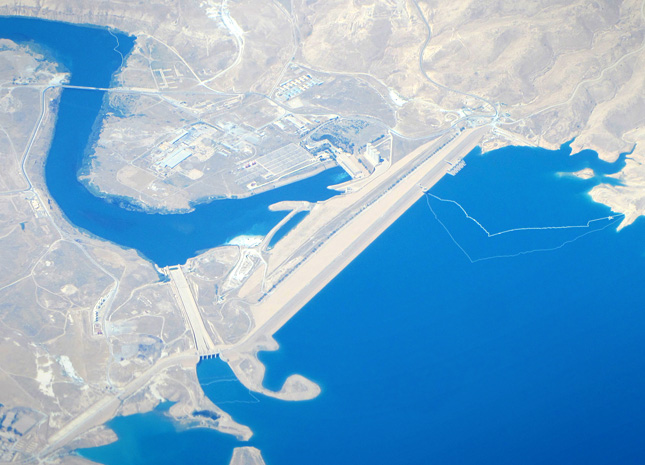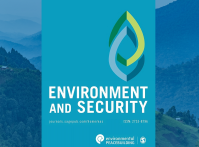-
Turning the Impending Mosul Dam Disaster Into Opportunity
April 19, 2016 By Azzam Alwash
Iraq has seen its share of calamities in recent years, but none is as dangerous as the impending failure of the Mosul Dam. A breach of the dam will result in a tsunami-like wave that sweeps through cities and hamlets along the Tigris River from Mosul to as far south as Amarah and even Basra. Baghdad would be submerged under five meters of water within four days. Not only do experts estimate the possible fatalities to range from 500,000 to more than 1 million, but consider the logistics of trying to provide electricity, drinking water, food, hospitals, transportation, and diesel for millions of people.
The reaction to this potential calamity ranges from the U.S. government’s caution, which has issued warnings to its expats to stay at least six kilometers away from the Tigris (though the U.S. embassy in Baghdad is situated on the shores of the Tigris), to the Iraqi government’s nonchalance, which has only calm pronouncements to offer that there is nothing wrong and grouting operations designed to strengthen the dam are proceeding on schedule.
The Iraqi government’s lackadaisical attitude notwithstanding, internal reports generated by the U.S. Army Corps of Engineers – which has recently installed very sensitive monitoring instruments – indicate that the dam is in real danger. The sensing equipment has detected a movement of five millimeters of settlement and lateral movement. This may not seem to be very large, but for a dam of such significant size – and the largest in Iraq – such a move over a short period of time may be a tell-tale sign of an incoming disaster.
A Creeping Problem
Baghdad has given a $300 million contract to an Italian firm to introduce new grouting technology. This is akin to putting a Band-Aid on a gunshot wound and pretending that everything is going to be all right. Further, the next two months are the most critical as snow starts to melt and reservoirs start to fill. The contract given out will not be implemented in time to avert a disaster this flood season. The Iraqi government is also trying to make space in the reservoir by letting one of the floodgates open (the other one has been out of commission since 2014) and directing water toward Lake Tharthar, an artificial lake between the Tigris and Euphrates, to store for the summer when the south will need it. However, Lake Tharthar is in the middle of ISIS-controlled territory.
Such a deep cutoff wall has never been attempted beforeFor a more permanent solution, two construction companies have suggested supporting the foundation with an unprecedented 200-meter (600 feet) cutoff slurry wall under the dam. This solution, estimated to cost approximately $3 billion, may not even solve the problem. Such a deep cutoff wall has never been attempted before and special equipment would need to be designed and built to accomplish such an engineering feat.
Another solution that has been suggested is to build another smaller dam downstream in the Daboush area to arrest the peak wave and reduce the impact. However, such a dam would need years to be constructed and meanwhile we have to live with the fear of continued seepage breaching the Mosul Dam.
From Challenge, Cooperation?
There is, however, a solution that is not only cheaper but may become the basis of new cooperation between the Iraqi government, the Kurds, and Turkey; save the historic Turkish city of Hasankeyf; and deliver more water to the struggling marshes of southern Iraq. There are a number of steps to this alternative proposition.
First, instead of investing the estimated $3 billion needed to repair the Mosul Dam – money that Iraq can hardly afford today given the budget deficit – resources could be directed toward storing water in the mountainous regions of Turkey and decommissioning the Mosul Dam.
Currently the Turkish government is in the last stages of completing the Ilisu Dam, but the growing Kurdish rebellion and the worsening security situation in the area is impeding construction. As well, there is controversy over the possible inundation of Hasankeyf, a potential World Heritage Site.
Iraq, under this proposal, would pay Turkey to store water for its use. Storage in Turkey’s higher elevations, with narrow and deep valleys, would significantly reduce the surface area available for evaporation compared to the Mosul Dam, which would in turn make more water available downstream. Iraq would pay the leasing fees with oil and gas exports, thus securing a market for its increasing hydrocarbon production.
Further, to subsidize the deal, UNESCO could pay part of the leasing fees to ensure Ilisu Dam waters do not reach a level that would threaten Hasankeyf. The United States could also consider subsidizing the deal to reduce tensions in the area and help Iraq avert a humanitarian disaster from the breaching of the Mosul Dam.
Beyond these immediate concrete benefits, such an arrangement would also create a mechanism for the multi-lateral cooperative management of the river basins. This could act as a foundation for cooperation on a wide range of other issues, including saving the marshes of southern Iraq by coordinating releases from the dams in the spring to replicate the historic cycle of flood waters, renewing the vitality of the biodiverse marshes. Iraq could also coordinate maintenance of oil and gas plants, which increases demand for electricity imports, with reservoir releases in Turkey, which generate extra hydroelectricity.
Azzam Alwash is the founder and CEO of Nature Iraq, an NGO based in Baghdad.
Sources: Doğan News Agency, U.S. Army Corps of Engineers, U.S. Department of State.
Photo Credit: Aerial view of the Mosul Dam, July 2012, courtesy of Wikimedia Commons.
Topics: biodiversity, conflict, cooperation, development, economics, energy, environment, environmental peacemaking, environmental security, featured, flooding, From the Wilson Center, hydropower, international environmental governance, Iraq, Middle East, military, natural gas, natural resources, oil, security, Turkey, U.S., UN, water
 A Publication of the Stimson Center.
A Publication of the Stimson Center.






